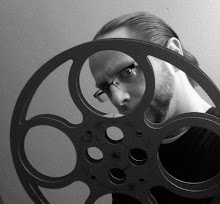“Every gun makes its
own tune.”
This month marks the 50th anniversary of Sergio
Leone’s THE GOOD, THE BAD, AND THE UGLY.
THE GOOD, THE BAD, AND THE UGLY was the third and final film
in Italian director Sergio Leone’s Dollars
Trilogy, following A FISTFUL OF DOLLARS (1964), and FOR A FEW DOLLARS MORE
(1965)…and would take place before the events of the 1964 installment; acting
as a “prequel” of sorts. Set during the American Civil War and centered around
three gunslingers competing to find a treasure of Confederate gold, it would be
the latest entry in the often scoffed-at sub-genre of the Western, nicknamed
“the Spaghetti Western”, meaning, a movie about the American Old West made by
Italian filmmakers.
Having already starred in the previous two entries in the Dollars Trilogy, Clint Eastwood, who was
already a bankable American movie star, signed on to reprise the role of the
mysterious “man with no name” for a third time. He was joined by Lee Van Cleef
(the bad), and Eli Wallach (the ugly), and a host of Italian actors. Leone and
screenwriter Luciano Vincenzoni would work on the script with the idea of
showing the absurdity of war, and filming would take place in Rome, Spain, and
Almeria. The production was difficult, with problems ranging from Eastwood
clashing with Leone (they would never work together again), and several
injuries to Wallach. With an international cast, the actors spoke their native
languages, and the lines spoken by Eastwood, Van Cleef, and Wallach would be
dubbed to Italian for the debut release and in the American version, the
Italian actors would be dubbed to English. Leone would put the film together
with his trademark signature of tight close-ups and sweeping long shots, and
composer Ennio Morricone would add one of his greatest scores.
THE GOOD, THE BAD, AND THE UGLY would premiere in Rome in
1966, but would not come to the United States until the following year, when
all three films in the Dollars Trilogy
would be released in America. Upon that release, critics were harsh on the
film, as the sub-genre of the “Spaghetti Western” was not a popular one in
America. Decades later, the film would be regarded as one of the greatest
Westerns of all time, and would appear on many lists of all-time great films.
Clint Eastwood would be cemented in American culture as one of the best to ever
wear a cowboy hat, and his classic look with the off-shoulder poncho would be
one of the most iconic and most referenced look in pop-culture…from Boba Fett
to the Oscar-winning RANGO. The title of the film itself would be a permanent entry into pop culture, with many using the three words to title articles (and blogs), to describe a situation. Morricone’s soundtrack, which would be inducted
into the Emmy Hall of Fame in 2009, would forever be associated with Westerns,
and heavy metal group Metallica would use his powerful track, The Ecstasy of Gold, to open their
concerts for over 30 years.
*
The legacy of THE GOOD, THE BAD, AND THE UGLY can still be
seen in film today. Big-name filmmakers Martin Scorsese and Quentin Tarantino
to this day draw heavily from it, and their influence has already trickled down
to a new generation of filmmakers, including Clint Eastwood himself; whose
Oscar-winning Western UNFORGIVEN seemed to carry lessons and themes learned
from Leone’s film. Eastwood and all directors who came after him recognize the
film as a study in filmmaking. After all, one of the best storytelling
techniques is having a trio of characters; one a believer, one a non-believer,
and the other neutral. That is the
foundation for all great films, and although Leone wasn’t the first to ever do
it, he set the standard for the next half-century. THE GOOD, THE BAD, AND THE
UGLY isn’t just a great Western, but a great movie which still acts as the
launching point for modern cinema.
In this world there’s
two types of people my friend. Those with loaded guns and those who dig. You
dig.”



No comments:
Post a Comment
A few rules:
1. Personal attacks not tolerated.
2. Haters welcome, if you can justify it.
3. Swearing is goddamn OK.